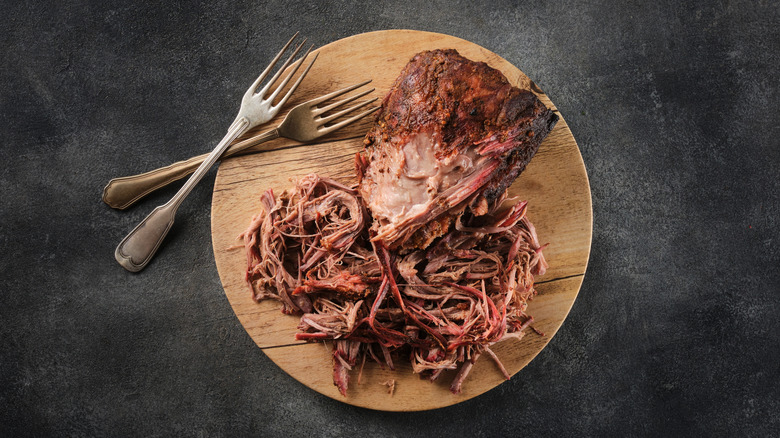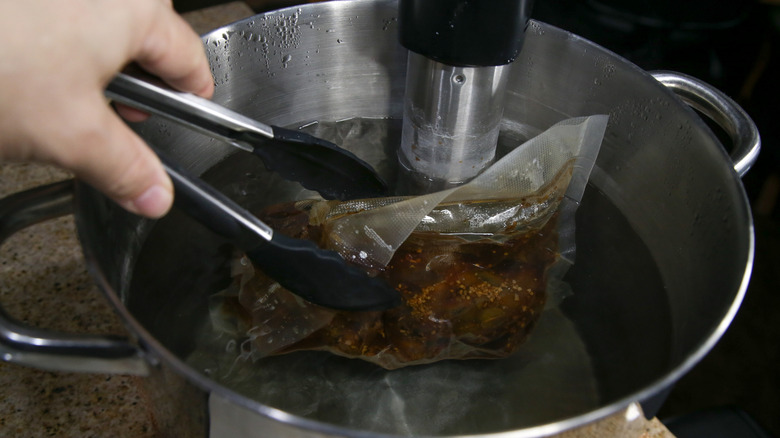How To Reheat Pulled Pork Without Drying It Out
The culinary calling card of pulled pork is its uncanny ability to melt in your mouth. Slow cooking the meat on low heat for hours on end renders the fats and connective tissues down into a sumptuous texture that entire regional identities are built around (any low-country boy worth his salt will tell you mustard-based BBQ is where it's at). However, there's no amount of Carolina Gold sauce that will rescue irresponsibly reheated pulled pork leftovers from drying out. Like all slow cooking traditions, the best results take a little bit of effort.
To keep that hard-won moisture locked inside your pulled pork, make sure you store the leftovers in a vacuum sealed bag. Then, when it comes time to chow down, throw the bag of pulled pork into a pot of boiling water for five minutes per serving (roughly 5 oz). Of course, this assumes that your meat was refrigerated; you'll want to double the time for frozen leftovers.
The reason this works is thanks to physics. Microwaving, baking, or pan frying pulled pork leftovers excites the moisture in the meat, causing it to evaporate into the aether. The vacuum sealed bag in boiling water, on the other hand, traps all that moisture in and allows for a more thorough reheating.
How to make sure the meat reaches a safe temperature
The USDA considers 165 degrees Fahrenheit the minimum safe internal temperature for leftovers. However, checking the internal temperature of your vacuum sealed pulled pork requires opening the bag, which sort of defeats the purpose of sealing it in the first place.
That said, you don't need to reinvent the wheel. Sous vide chefs have made an art of safely preparing deliciously tender meat through immersion cooking. Rather than using a meat thermometer, they use physics to calculate how long the meat needs to stay submerged. The underlying math is a little complicated, but it's generally accepted that it takes about 30 minutes for heated water to penetrate half an inch deep into refrigerated meat. (For reference, a pound of pulled pork vacuum seals down to roughly half of an inch.)
However, boiling water transfers heat significantly faster than sous vide temperatures. Once again, some back-of-napkin math is involved, but boiling water transfers heat into meat about 57% faster than what sous vide assumes. Additionally, the target temperature set by the USDA (165 degrees Fahrenheit) is just 78% of boiling, bringing that initial 30 minute cooking time for a pound of meat down to just under 15 minutes.
Remember that a pound of pulled pork is a little over three servings (~5 oz each). Thus, it makes good sense to anticipate how much you're actually going to eat in a single sitting, and apportion your vacuum bags accordingly. For example, if you're reheating enough for two servings, weigh out a heavy 10 oz, then seal the meat up and refrigerate. Be sure to label the bag "2 servings @ 10 minutes" in permanent marker so that there's no guesswork involved. (Remember, double the cook time for frozen leftovers!)

